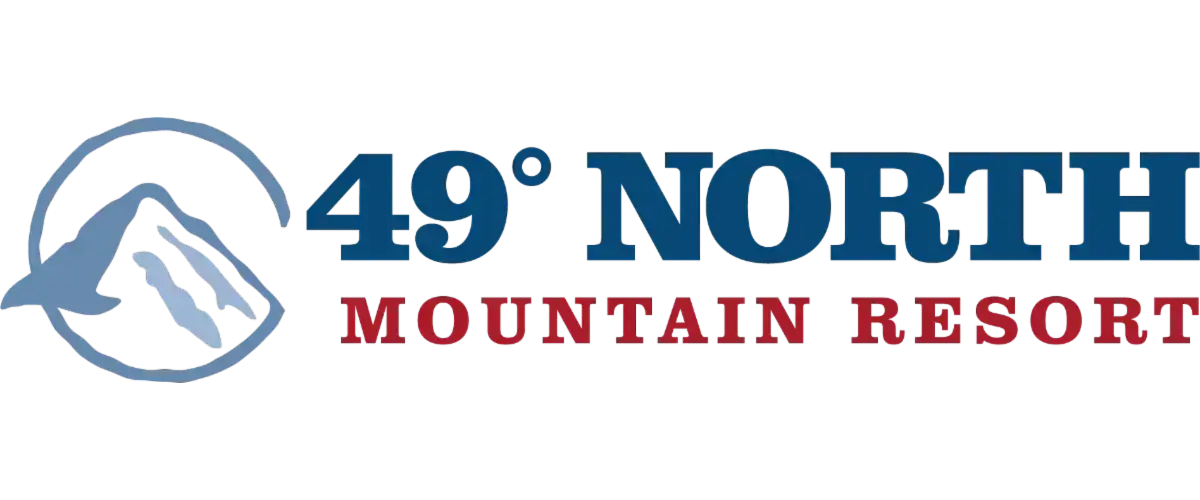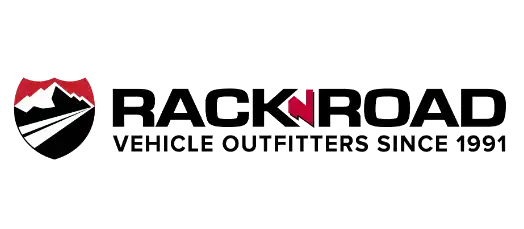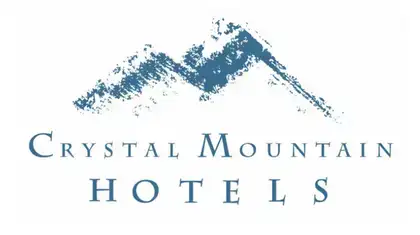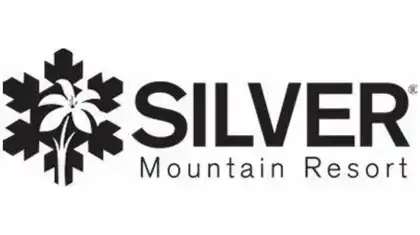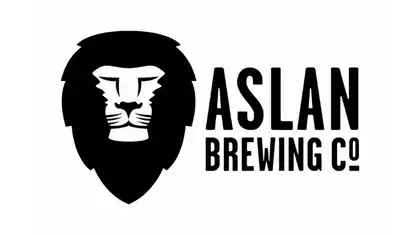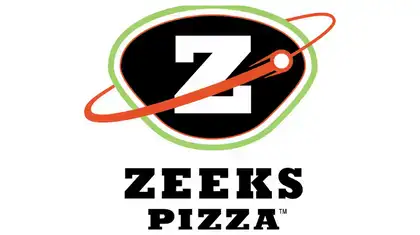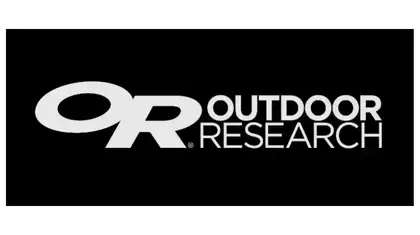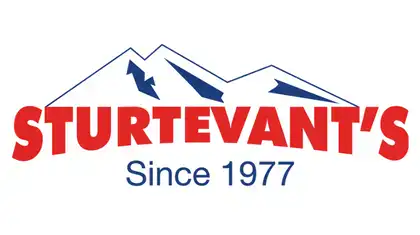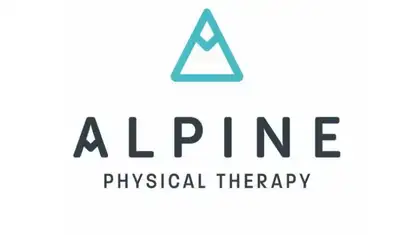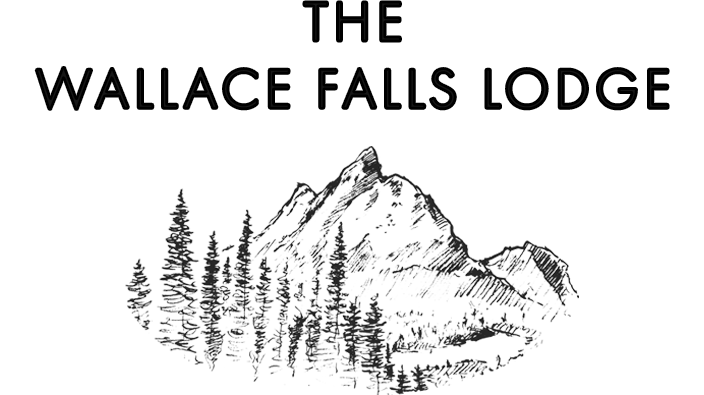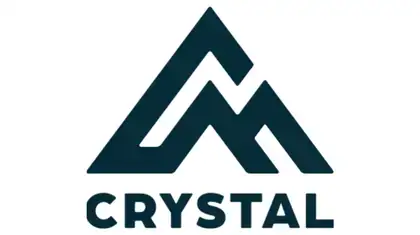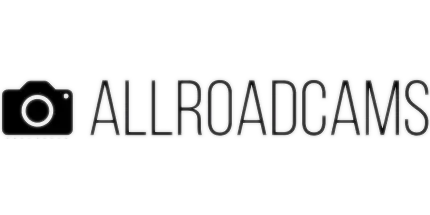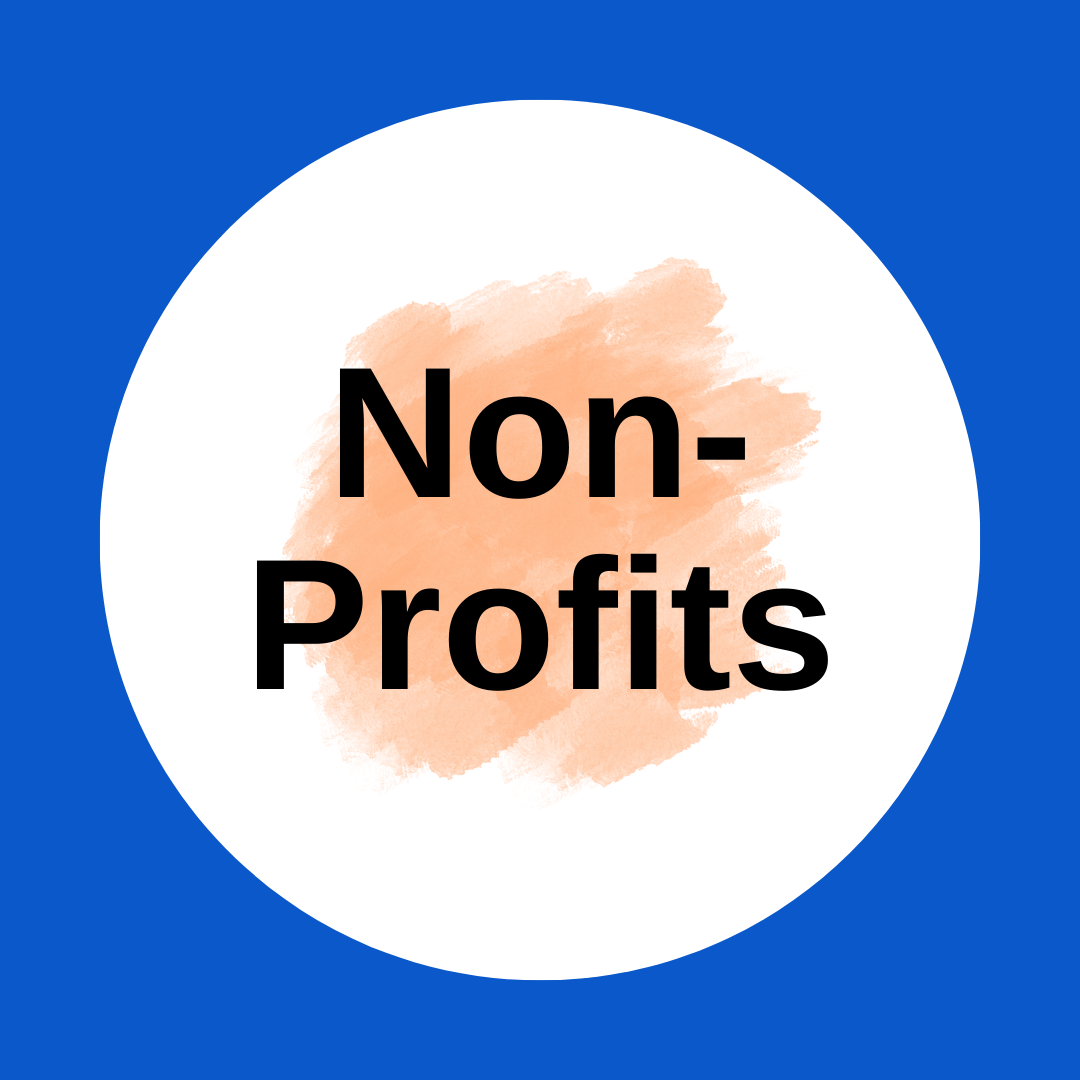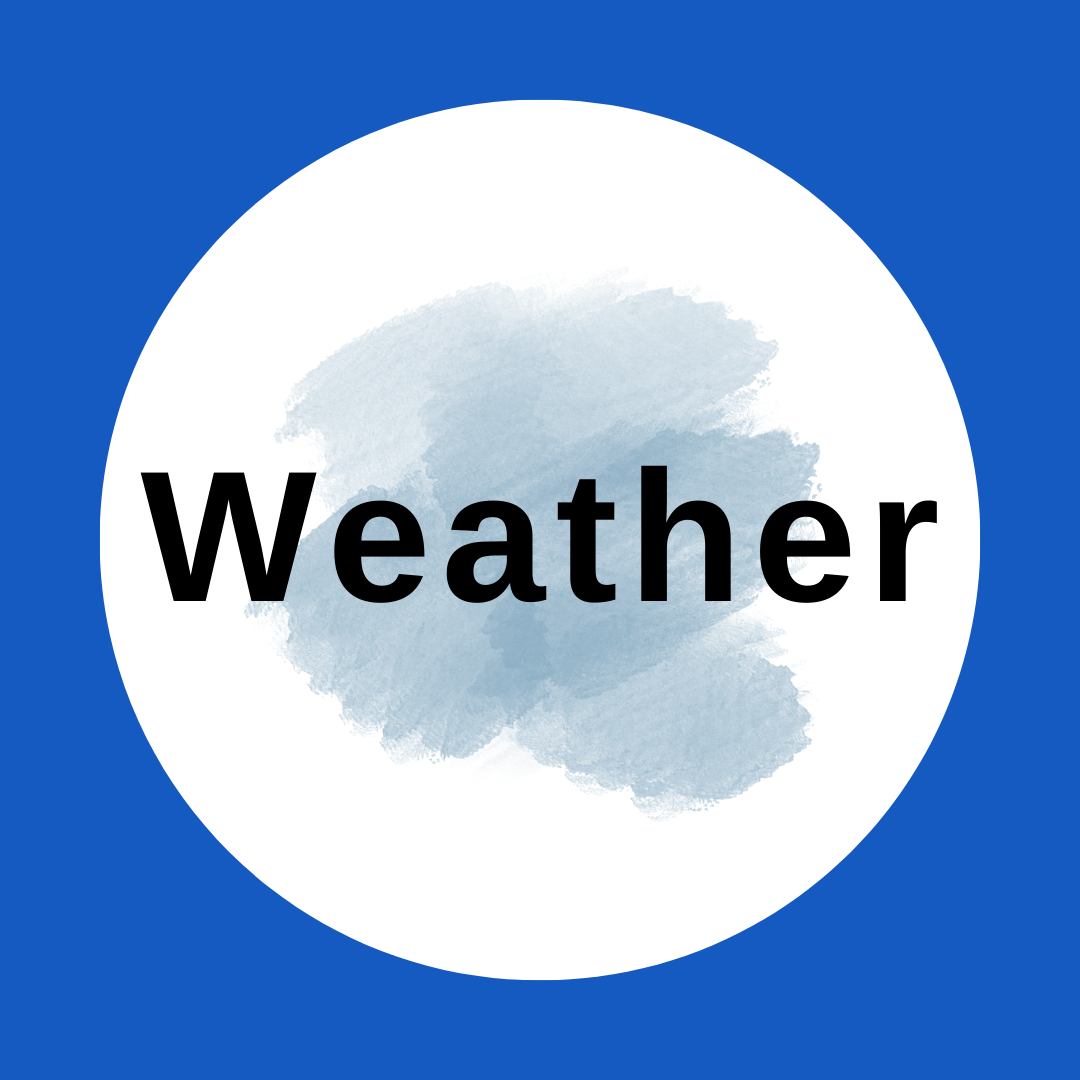Ask the Weatherman. Zoom replay from April 25, 2024.
Click the image for the YouTube replay.
Transcript with slides, transcript, and some highlights with time stamps.
Season recap, special guest Steve from Powderchasers and La Niña notes for next season.

Powder Chaser Steve is with us.
He's a person who chases powder all over the western United States. He's skied the best ski areas on the best days, first chair on the best run. So you're going to be really entertained by what he has to say.
He chases powder all over the west at a moment's notice. All right, I'll go through our weekend forecast, first of all, because we do have some areas that are still open. The weekend forecast doesn't look that great.
Please check our call websites for the ski areas. Many are closed, but Crystal is still open, and Whistler is still open. I just skied there last week.
I was skiing there last week at this time. That's a picture over at Symphony Bowl. The bowls are great right now.
They got them all groomed up. Of course, Mount Hood Meadows in Oregon and Bachelor in Oregon both have extended seasons. Check their hours of operation, and if you have an icon pass, Mammoth Mountain in California is also continuing to open through May.
But check before you fly down there to Reno, and then you typically have to rent a car and drive down, but it's a very pretty drive down the east slopes of the Sierra Nevada. All right, that's the weekend forecast and what's up for skiing. We're going to do a recap of what happened this week, this last season.

It's really been uneven and really variable, and we're also going to have a hint of next year, too. So the forecast for this season was El Niño. We certainly had the El Niño, and it produced some warm weather, no doubt about that, and then we had high snow levels from time to time.
The snowpack in the end turned out to be near or a little bit below normal, that forecast, and it turned out to be pretty close, but it came in very uneven. The first part of the season was very much a struggle, so we observed a slow start that was somewhat predictable in the fact that we had some warm air masses that were giving us problems as far as getting snow instead of rain. So it was warmer than normal, not only due to El Niño, but also the oceans of the world globally were above normal almost for the entire globe.
That's very unusual, and so we had some unusual things. Plus in the background is this very slow global warming. It's been about a degree, maybe a degree and a half in the last 50 years, but it's enough to cause some issues, and it will continue to cause issues in the future as well.
The overall snowpack again was near or below normal. Next season, here's a little hint, La Niña is back, and La Niña really favors the northwest with cool and snowy weather, a lot more low snow levels, fewer higher snow levels, and expect a snowpack near to above normal for these La Niñas. Very good for the northwest, and so expect a good year next year.
We'll have more on that as we get closer late summer and early fall period. Here's kind of how the snow came in. I want to show you this.

This is called a Snotel snow site. It's a corral pass which is about 5,800 feet just north of Crystal, but what you can tell on this, it measures the snow as it comes in. It was kind of a slow start.
Anything in the yellow and red are below normal. Normal would be that green line, okay? So you can see we kind of stayed below normal much of the season, but the early season was a bit of a struggle. Now, a lot of times we were kind of marginal at Thanksgiving, but it gets going a little bit in December, and by Christmas we always have enough snow to make it happen.
Well, this Christmas was the exception. We barely had enough, and there were some atmospheric rivers, especially there was one early in December. I'll show you that one in a second, and it took apart part of the snowpack.
You can see that little dip. That's melting snow, so the atmospheric rivers don't take all the snow back apart, but they take some of it apart. You can see it melted there.
Then we gained it back. We had a little bit in December.
Okay, so anyway, so by January, it was kind of a rough month. We had that really cold spell.
That was one of the coldest spells that we've had duration-wise and as far as deep cold for quite some time, and so that was really cold. Plus, we had some atmospheric rivers happening during that time period, middle of the month, too. Then we finally started to get some snow into January here in January.
Sorry about that, right here in January. Then we get this other atmospheric river. Look at how much snow it takes off.
Quite a bit. That's a lot to take off, and then we start building back again toward very late in February, but February and March are pretty good. You get this strong building.
We still stay below normal, and I'll show you the specific ski areas in a second. Then we get to April, and it kind of flattens out altogether, and you can see a little bump there, and it's kind of going down. So all in all, we're kind of at the low end of where we should have been all year long.

Here's kind of a summary, too. November through December, only 49 percent of normal. Regionally, one of the lowest in 52 years, so it was a bad start.
Christmas was difficult with this low snow back in, again, January. We had the snow, but we also had a cold spelt and a melt. February and March were pretty good snow days.
We had quite a few, and then it kind of was mixed bag in much of April. You can see some of the percent of normal. Now, this Whistler one, at the base of Whistler, they did not do that great, but mid-Mountain River, I should say, Roundhouse there, they did pretty well in the end.
Almost normal. Stevens Pass was below normal. So was Mount Baker.
Crystal was below normal, too. Mount Hood, Oregon did much better than we did. Mount Hood was near above, and Batchelor was near normal, you can see there as well.

So kind of a mixed bag, kind of not as good in Washington as Oregon. You know, the origins of our storms, this is a big picture. Look, they come out of the Gulf of Alaska and across the Pacific here.
This is the area of storms that develop that impact us. We also get cold air, cold and dry air from the north, and that sometimes alternates with these stormy periods. These atmospheric rivers come out of the mid-Pacific, and they attach themselves to storms.
So those are what create some of the warm weather, but also some of the wet weather, too. And occasionally in the fall time, we get these dying typhoons out here, and they get swept up into the storm track, and that's what creates some of our storms. There's cold and storms coming off Asia as well.
And this El Niño, La Niña, again, this year was El Niño, La Niña next year, it's this unusual warm and cold water temperatures down here in the Pacific. And when it sloshes from left to right with changing winds, it can affect thunderstorms down here, which in turn affect the storm track, and that's how we forecast off the El Niño and La Niña. Going back a little bit to December of 2020, this is a nice atmospheric river.

I just wanted to show this, but they are not fun. This one hit an 8,000 foot snow level, caused some high rivers. They cause high snow levels, but one good thing, they're so big.
This is the big low right here, and this is the atmospheric river is right in here. This is all cold air. So once you get to this part of the storm, it's low snow levels and a lot of snow.
But this part is high snow levels and a lot of rain at lower elevations and medium elevations, and some snow at the top. But look how big, way out here beyond Hawaii, and really causes some havoc for our skiing. This is kind of a classic Pacific storm.

Cold air comes wrapping around the low, and kind of see it looks like a cinnamon roll. And this is the cold air, the spotty area. The atmospheric river rides right in here, right ahead of the cold front, and it's warm.
But once you get a little north of the atmospheric river, there's still moisture and it's lowering snow levels. So that's what you always have to watch with these atmospheric rivers. We call them ARs for short.
When you get into the cold air, it can be really, this can produce tons of really light and beautiful snow. All right, so our El Niño forecast was warm, but near to below normal snowpack. And here's how, and to the right shows what we expected.

More action down toward the southwest, warmth and a little bit dry up to the northwest. And below here is what actually happened the last 90 days. You can see in the northwest, it was kind of near normal, a little bit below normal toward the North Cascades.
You can see where my arrow is. Kind of a little bit above as you get into Oregon and California and the southwest had above normal. And this is exactly what El Niño generally forecasts, wet down here in the southwest.
You can see Arizona had some big snows in there. And temperature-wise, it's warm in the northwest. You can see this orange and yellow is above normal, California below normal.
So you can see it came pretty close to what El Niño happens. Now, a lot of people think Colorado and Utah are affected by El Niño, but in this case, Utah had excellent snow and so did Colorado and some of California. But you can see that they're kind of in between and they don't really have a tendency with El Niño or La Nino.
So there's a big myth that they are affected, but they're really not. You can see it clearly from this NOAA graph. Here's specific some of the ski areas.

Mount Baker really struggled early. That's really rare. They were among the lowest.
These are many decades of records. Some of these high ones were like 1999, the big La Niña year where they had 1140 inches of snow. And some of these low ones were 2015, 2005.
So we were kind of hovering near these lowest ever years. You can see the bulk of them are right around the blue line, which is average. St. Louis Snoqualmie Summit, the summit did get to near normal by mid-January, then lost some.
So we had lost some snow along the way. But once you get decent snow back by February, you can afford to lose some and still be okay. But it's tapered off a lot recently.
And you can see Crystal here hovering, just touching near normal for a while in March. They had a really nice March time, but then it started to go down. So you can kind of see what happened.
These are available on the NWAC site. So you can find them. And here's that wider picture of the entire west.

You can see the yellow and orange areas were below normal snowpack. Above normal were parts of Utah and kind of Colorado and Nevada and parts of California. And then the southwest, well above, like look at this, 300% of normal down in Arizona.
So it was pretty good there. Here's what the models say for next season, 2024-25.
(11:03) Powder days could be happening again.

We're right here where this graph is, my little arrow. And we're headed down to what's called kind of the neutral area. This is 0.50 to minus 5. And this is La Niña territory down here.
We're in El Niño. We're still in El Niño, but it's tapering off. And all the models take us back down through neutral over the summer and then to La Niña over the fall and winter.
And you can see it a little bit better here. That blue is La Niña. You can see the change from the red El Niño right now.
So it's going to transition over the summer. And then by early next fall, it's going to be sort of La Niña. So we don't know.
It's a little too early to tell how strong it might be, but any La Niña is good. Believe me, we just don't want to be near El Niño. And we're not.

And here's how it looks over the last, well, since 1990. So it's weakening right now. You can see it's peaked right onto the extreme right here.
And El Niño is not good. 2015 was a really bad year for it. But La Niña is fantastic.
This was our big year, 1999, 1998-99. Really some great skiing in here. So you can see it goes back and forth.
And it's not a, here's the thing. You got to remember, folks, this isn't a perfect match. Sometimes you get good ones, but it works most of the time.
But it's not always perfect. We'll see how strong this one is. I'd love to see another big, robust year like 1999.

Here's the situation with La Niña. We get cool and wet weather with northern storm track. The southwest sort of gets dry and warmer.
(13:00) And the Climate Prediction Center is already incorporating this idea into their long-range forecast. This is the forecast for December, January, and February of next year, late this year and next year. And you can see above normal precip and below normal temperature.
That means snow. And so they're already putting this La Niña into their official long-range forecast. We'll see this kind of sharpen up in confidence levels by late in the summer and early fall.
So I don't want to take it to the bank yet. It's not a guarantee. See, it says it right there.
And so just be aware of that. But I'd say it's pretty favorable. I think it's probably going to happen.
We were pretty good in predicting this El Niño last year. So that we should watch. And that is going to be fantastic.

But we'll answer your questions about the weather in a moment. But first, we want to welcome Powder Chaser Steve from OpenSnow.com and PowderChasers.com. He skied the best western ski areas on the best days, the first chair, the absolute finest powder days. He demands at least 8 to 10 inches for it to be a good one.
He demands the runs to be at least 1,000 to 1,500 vertical with continuous vertical, no benches, sorry. And he's skied many of these skiers, first chair all over the west, the best skiers, including Washington, where he often comes from his Utah base to the Seattle area and has skied all of our ski resorts on the best days, first chair. And he's going to tell us all about it.
Steve, welcome to the Powder Alert. Are you there? What an introduction. I protect myself from my boss, you know.
Oh, that's right. Okay, everybody, this is Powder Chaser. I am wearing my OR (Outdoor Research) jacket.
You got your OR jacket. Okay, good, good. Excellent, excellent.
Thanks, Larry. I do want to say that I have followed you for years, probably 20 years or more, however long you've been doing this. Well, thank you.
It's been a while, but we want to extract some of the secrets of powder chasing around the west and also specifically Washington State. You know, we're kind of under the radar, which is good, but Powder Chaser, remember, has done a lot of these skiers on the best days, but he comes out here quite often. Maybe not this year because it was kind of an off and on year.
(15:34) Tell us why you think Washington is a good place to chase powder.
Well, it's definitely in my top three. There's no doubt about it. I love the vibe.
It's more chill. It's less aggressive waiting for first share. Every ski resort, you know, has its own personality.
I find that Washington seems to have quite a big difference between like Baker and Crystal, you know, and Stevens even. So I like the variety. The fact that you're not on, I mean, obviously Interstate 90 is a major corridor, but, you know, if you chase snow in Colorado, you can almost bet that I-70 is going to close.
So for the most part, I mean, in fact, even this year, I think Stevens Pass stayed open for most of the season. And I like the fact that it's a little bit less off the grid for tourism as far as being like a destination area. And it's gotten obviously way more busier than it was 10 years ago, but I think that's primarily locals.
I also find the snow quality to be really good in that you get a lot of storms that come in wet and they finish off with that perfect medium density. I personally don't think 20 to 1 or 25 to 1 dry, complete, we call it Montana smoke. It's not always your best friend.
It depends on what's underneath because you are going to sink through. And it's almost like Washington gets that full reset and their storms can be really big. You know, you'll get those two to three foot dumps that cover up every bump and there's not a ripple in the sky.
So, you know, there's a lot of reasons. I think the terrain is fantastic too.
So you've skied it. So let's go through some of the areas you've skied all the major areas. And remember folks, Steve gets to the lift an hour or two before it even opened.
He's the guy waiting in line to get first chair every time. And he knows the best slopes and the best places to ski and get to, knows how the mountain works. Tell us a few stories about places like Baker or even the Summit.
You've had really good powder days at the Summit, haven't you? I have. So, you know, I guess one of my best chases I've ever had started at Crystal. It was about three years ago.
I believe it was a three foot day. I caught the openings of the Rex chair. Then I caught chair six and then I, and then I think I caught, then I caught the opening of Employee Housing, which is actually one of my favorite runs on the planet.
And from there, you know, I rushed out of Crystal and caught like a seven o'clock PM Delta flight to Salt Lake and caught the exact same storm all over again. So that's like 30 inches of snowbird the next day. And I actually think I might've chased it all the way to Colorado.
I've done three states in one storm. I call that the Powder Trifecta. Yeah.
So I remember talking to you, chasing some of these storms. I remember talking to you and you were chasing some of these storms and you hit Washington. Then you were based in Utah.
Then you hit something in Utah and then drive up to Jackson hHole, which is what, five hours North of Salt Lake and get it again. So the same storm, it's just incredible. How do you get these flights? You got to tell us your secrets.
Yeah. I'm a master of travel and hotels and you know, the night it's very stressful. I mean, you're literally on the internet all day long trying to figure out how you're going to get from point A to point B. Maybe somebody on this call would want to sponsor a flight for me or a helicopter.
We can just fly from resort to resort. Huh? Yeah. The incredible things you do with your flights.
I'm just amazed because you have to make these decisions last minute, you know, 12 to 24 hours before the storm. And then you have to be confident you're not going to get busted. You know, so many things can happen during a storm.
He gets to Seattle. Okay. Then the roads closed or something because of the storms that he's chasing.
Right? So I have a question. Yeah. This year, this year, some of you on the call go to Andrea.
(19:59)
Q: What do you, what do you consider the best pattern run in Western Washington? And then
(Q): What about first top pick for first run at Stevens?
Well, kind of like Larry said earlier, I mean, the best run in Western Washington is any run that has 12 or more inches on it. Um, you know, it might be Baker.
It might be, um, it might be Stevens. And I'll answer that question, which run at Stevens. Um, I will say that I really love, uh, employee housing at crystal.
Um, but obviously, you know, if the conditions you're just right at Stevens with a convergent zone and crystals, crystal often is very different, I think, then the central quarter, to be honest with you, a lot of times Stevens will get one to two feet and crystal might end up just getting skunked because of the rainier shadowing. And, um, and then this year, you know, we saw Baker get a significant amount of moisture, but unfortunately it was a lot of rain, but back on topic, as far as Stevens, um, my best run at Stevens is first chair on the, um, the, uh, not, not the first, the second chair, um, the backside. What does that chair lift to the backside? Larry, what is that Jupiter? Well, from the front, it's, it's, it's the only chair I think in the United States, it actually goes from the bottom double diamond.
Thank you. Double diamond actually is a continuous chair from the pace of the front to the very back and to get double D on a good day. Uh, my favorite run actually is double diamond, but I usually will just drop into the backside, do one or two runs and then hit double D. Um, that's, that is a lot of fun.
You've got to get it early though, cause Stevens gets tracked out very quickly. Yeah. As everywhere you were telling us, uh, about the story of going to crystal this year.
Uh, somebody had that little boo-boo on the way up. Yeah, I couldn't believe it. I, I, in fact, this is the first year that I, um, that I only came to Washington once. I usually average at least seven, maybe eight days at minimum.
And the one day I went to crystal and some of you on this call might've been there. Um, I won't tell you what time it was, but there was no daylight.

A logging truck on the crystal mountain highway got hit ironically by a tree, you know, the, and, and the tree just said, when here comes a logging truck, I'm going to hit them. And he completely crushed the backside of the truck. And I thought I was done.
The truck was purely just across the road. I thought that road would never open this logger, climbed out of his cab and started cutting. And he had that road cleared within maybe 60 minutes.
And I thought this was going to be an eight hour deal. Wow. Yeah, that's a big, big day, big day.
Yeah. You got up there and you got some tracks, huh? I did. Somebody asked earlier about snowbird in the chat.
Um, I'm actually in Utah right now. I was going to be in Seattle for work and I'm here gambling on the weekend storm. Somebody asked about Monday.
I think that storm's pretty much out of here by Monday, but I do think a snowbird is probably going to get somewhere between eight and 15 inches by late Sunday. Okay.
(23:23) Q: What about next week? What about next week? Cause Ed Pearson is going to be Snowbird and Mammoth.
Um, you know, I haven't looked at the models beyond this weekend. I, I think, I think the conditions are good. Um, the snowbird has limited terrain open right now, just so you know, they closed the GAD zoom chair.
It's really only the tram and mineral basin. The lower GAD Valley area is closed and, um, the conditions will be great, but I'm not expecting much powder next week from what I've seen, but I really concentrate it more on the Saturday, Sunday storm. That's going to be warm and it's going to finish a little bit cooler on Sunday.
Oh, that sounds good. This is Ed. Yeah.
We're my son lives there. We're visiting probably skin snowbird Saturday and maybe Brighton Sunday for closing. And then we're heading to mMammoth.
So sounds great. Thank you. Yeah.
Whatever the higher elevation, the better. Cause your snow level is going to be about 7,500 feet this weekend.
Hey, Steve, you got any tips on driving in the snow? Uh, you, you know, one of the things about powder chasing the powder, but you're also fully engulfed in storms.
Usually anything about driving or parking or, uh, you know, getting there sort of any strategies that you use? Yeah, absolutely. Yeah. I don't, I don't think anybody on the planet drives in more snow than I do.
Um, I I'm a really big believer in snow tires. Um, and number two, I do have a car out there that I keep in Seattle with gear and ready to go. I think any snow tire will get the job done.
- I happen to use Blizzacks, and my entire fleet, I've got blizzacks on full tank of gas.
- People don't think about that full tank of gas will actually make your car a little heavier, gives you a little bit more stability in the, in the choppy slushy roads that you get, as you approach the ski areas, as you know, usually have rain to slush and then slush to snow.
- I have manual transmissions on two of my cars and, you know, with an automatic, you could certainly downshift, but always downshift, um, one, one or two gears so that when you take your foot off the gas, you're going to have a little breakage.
- As far as driving, I prefer lower center of gravity cars. I know everyone pretty much drives an SUV these days. Um, I don't have a Subaru, but I think Subarus are great.
I see a lot of them in Washington. Um, I don't like high center of gravity trucks just because they don't seem to have as much stability, but they have better ground clearance. And I drive, believe it or not, I drive Volkswagen's primarily.
Um, they're all station wagons and one of them is an all track. It's got a little better ground clearance, but my other, my car in Seattle is just a basic Volkswagen sport wagon with all wheel drive. Go ahead, Andrea.
Q: Eric wants to know what models or data does Steve use to predict powder?
Well, I can answer that. We all use the same models, but, uh, what, what do you use? The same models as you do, Larry, but I, you know, I look at the GFS, I look at the Euro and when I'm within 24 hours or 48 hours, I really like the short-term models.
The NAM 12, I actually like, and the HRR high resolution models. And you know, the real key is, is to see if there's any agreement between any of them. If you start to see a pattern or trend, you can buy off on it.
But as Larry will always say, a model can completely bust. Yeah, it's, uh, live by the models, die by the models, but, uh, they're the best thing we've got. So, uh, we try to live by them.
Mark says the audio is dropping now. Does, is anyone else having trouble with listening to the audio? Oh, there goes my dog.
Q: Dave Grover wants to know, do you have any tips regarding chasing?
It's going chasing to South America this summer. I'm the wrong person to ask. Um, no, you know, maybe somebody from the group can chime in, but it's funny.
I don't miss a powder day, but once winter is kind of over, which it isn't over yet. Um, I I'm ready to hang it up and just go to mountain biking. So I, I have not, I have not chased to South America.
Yeah. Folks are, I remember Steve is a snowboarder too. So, he has to hop around to sometimes traverse through some of this really deep snow to get to, you know, the run he wants to go to, you know, getting to, uh, employee housing or some of those other runs, double, double D, uh, you know, can be difficult to get to sometimes, not necessarily that one, but some of the runs.
So he has to hop around and wait out of some of his, uh, summertime adventures too. Uh, but, uh, getting back to the skiing or, and, uh, just the snow, uh, and Washington state, any, any, uh, stories about, Baker, they're kind of the king of the snow and with La Niña coming, coming in, they'll probably do very well. How do you like to strategize with Mount Baker?
How do you strategize with Mount Baker hitting that? Remember folks, Steve comes into town and he may have someplace he prefers like Stevens. He's kind of waiting until the, till it really happens in a leave very early in the morning to hit the spot that he wants. But how do you strategize with driving up?
You know, I, that's a good, yeah, that's a good question. And, and Baker's far.
I mean, it depends where you live. Obviously some of you live in the Northern part of the state. Um, I, I try to get up very early and look at the radar.
I use the radar as my final choice of what's going on. And also the snow telemetry NWAC is fantastic. You know, of all the places I go the NWAC sites are very good.
And as you know, Baker has no cameras. They don't even have any phone service. So it's, it's a real mystery sometimes with Baker, but I rely on NWAC great shout out to NWAC and their forecasters do a great job if any of them are on this call.
But I try to stay central. Like I'll stay in Kirkland or Redmond. Because you never know, you know, Baker might be on the models.
Hey, it's going to be deep at Baker. And then suddenly Stevens gets 15 inches. So I'll get up super early and do that three hour drive to Baker, but I need to be a Baker early to do the hike.
You know, you hike in and then you wait at the rope. I'm sure some of you on this call know what I'm talking about, or, you know, or maybe it's chair too, if I'm right on the chairlift numbers. Sometimes I've turned around, I mean, I've driven North on 1-5 and turned around and went the other direction.
And then you know... chasing powder is stressful. You've got wind outages. You've got power outages.
Crystal used to be a big problem. No, it's no longer, but you know, now it's wind. So you've got to make your decisions based on a lot of things.
It's not only the deepest of the snow, it's wind temperature, snow level, and what's happening, you know, as you're driving to that ski area. You know, one thing people have to understand too, is Steve will go up because I see him sometimes and he he'll be on the, one time he was on the first chairlift at crystal. I was on like the eight and, uh, he'll wait till those, some of the upper chairlifts open and he'll only take one, two, maybe three runs.
And then he's left by 10:30 to take his flight back to Utah. Right. I have done it.
I've done it. You know, to me, if you get one really good, it used to be different in the old days when it wasn't crowded, you could just do multiple runs. You could go to Stevens on a storm day and just do untracked all day.
It seems like it's never a secret anymore. Um, you know, obviously they have a snow camera now. If I get one good run on a day, a really good run it's made my day. I'll be happy no matter what happens after that.
(32:20) Q: Your thoughts on Japan, either of you next season.
I have not done Japan. I've only heard great, great stories. There's a reason why it's so good.
It's because those cold storms come off Asia and hit the Northern, uh, part of the Island. Uh, it's like an ideal snow machine. The best month to go there is January.
Everybody I've followed it. Plus most people tell me that it's not a guarantee. I understand the Japanese don't even like to ski powder that much.
So you kind of have it all to yourself. Uh, but I've not been there and I don't think you have either Steve, but you have any thoughts? I haven't either. It's on my bucket list and I've heard a few people tell me you're right about January, but if you go to Japan, be prepared to be there.
Try to book two weeks because in a two week period, you're almost guaranteed of deep powder. If you only go for five days, you might actually hit, you may actually hit a dry spell and even seven days.
The other thing I've been told is to try to hit the smaller ski areas that are lesser known. Um, I have heard some powder experts tell me that these little areas get no traffic. You'll be able to just do laps all day long at one small ski or rather than compete at like Niseko or something.
Certainly, the back country is very good in many areas, but as far as inbounds, um, these larger areas have gotten very crowded or not crowded, but just more popular. Um, try to pick a smaller resort and do some back country if you can.
Q: Steve, do you have vehicles stashed in other destinations?
Yes. I have two vehicles in Utah and two in Colorado. I have a place in Colorado, so that actually makes it very convenient.
And then one in Seattle, right near the Seattle airport, which where I was going to be today, actually, but I ended up coming to Utah. Okay. Um, and then people have to go.
It sounds like a Steve is a multi-billionaire Microsoft guy, but he has a real full-time job. No, no, you don't. I thought you did.
No, he does. No, no, he has a full-time job and his boss doesn't fully understand what he does on the side and has even said that he's a great worker, you know, and so he has a full-time regular job like you and me. You know, it's amazing that you can do this with a full-time job, but he doesn't anyway. I just want to clarify that because, you know, I mean, come on, we could all do this if we had the money, but he's working full-time.
Way to go, Steve. Just tell your boss a happy employee is a better employee. It's so true.
If you miss a Powder day, I know the feeling you get in your stomach.
Q: Norm wants to know, uh, if they were going to buy another, a second home, would you pick Colorado, Utah, or California? Larry, you kind of talked about this last time on where you'd build a cabin. Yeah, so that was sort of a cabin based on global warming, but yeah, Steve, I've skied over 60 ski areas.
You've skied the best of the best. Where would you build your ideal home near a ski area? Do you have a favorite spot? Well, yes, it would be Utah is a better location of those three. You're more central from Utah.
You can drive to California in seven to nine hours. You're at Tahoe. You're four and a half hours from Jackson.
You can easily fly to Seattle cause Salt Lake's a hub for Delta. You could drive it. I have done it before.
It's about 12 hours. And, and then you can chase back to the Western side of Colorado. The problem with Colorado is if you live on the front range, that Eastern quarter is a nightmare on any powder day.
(36:20) If I was gonna, you know, advise somebody like, Hey, if I just wanted to retire and live maybe at one ski area and it was a quiet ski area, not one of the major areas. I really liked Driggs, Idaho, right outside Grand Targhee. And I think Larry was at Grand Targhee last year.
Larry was skiing Grand Targhee last year. It is a delightful area, fantastic ski area and delightful town there at Driggs. So I see the appeal there.
And quite frankly, as you know, some of the best powder skiing anywhere is right there, you know? So I would have to agree with you on that one. Driggs. And you know, there's flights from Seattle to Jackson Hole now during the week.
They're fairly cheap. It's amazing. So yeah, I would agree with you on that one.
And then for saving money, stay at hotels that are outside the ski resorts themselves. Not that you have many hotels in Washington at any ski area, but you know, if I go to Jackson Hole, I might actually stay in Idaho Falls, which is an hour and a half drive.
(37:45) Q: Given the low snowpack this year, should we anticipate water rationing? That's a really good question.
Yes, we're below normal in our snowpack. It kind of depends. First of all, I've checked some of the reservoirs, you know, I used to do reservoir control for the Corps of Engineers with flood control, and they're in good shape.
It kind of all depends. We have enough snow to make, do fine. It depends on how the spring, if the spring is kind of cool and wet, which does look like for the next least week, that'll keep the snow from melting too fast and it will keep the rivers sort of a little bit higher than they normally would be with a dry pattern.
I think overall we won't have a big issue. There might be a little spotty areas here and there, but I think we have enough snow and there's been enough cool wet weather in the spring. I don't foresee any problems on any kind of scale.
There might be somebody with a well that's a little low or something like that, but in the big picture, I don't think it's a problem.
Q: Keith asks, what about next season in BC, as in Revelstoke, Kicking Horse, Banff? Any ideas? Yeah, Steve can chime in in a second.
I think with La Niña, they sort of get some of the overflow effect here from Washington and coastal British Columbia, and so they'll do much better than they did this year. It was kind of hit and miss this year. I think it would be more favorable for a good interior BC sort of snow pattern.
(39:35) So I'd be fairly optimistic. I think anything in the Northwest, some of the interior of Washington state, 49 degrees, and in Northern Idaho, Silver looks good. Bachelor should be good.
The Northwest does really well during La Niña. I'm very optimistic about it. Steve, anything you want to add with that? Yeah, what I really like is the colder temperatures.
I mean, you guys got a lot of, you actually had a lot of moisture this year for El Niño year. That's right.
And the difference was it pushed all the moisture, the jet stream got pushed North of the Sierra, and everybody thought they were going to be golfing all winter in Tahoe.
And then suddenly the jet stream pushed further south in January or February for Tahoe, but you had a lot of rain. But next year with that colder temperatures, I think it's going to be game on. And as you know, BC has, you know, their elevations are much lower than what you have.
So, you know, aside from Whistler, of course, but the interior I think will do better. And the avalanche danger was really high this year because they had a lot of warm spells and then cold spells. Yeah, that's a really good point.
The avalanche danger can really be variable when you get these warm spells and cold spells. Anytime there's a transition like that, it's trouble. But as you know, the ski areas do a great job with avalanche control.
And then the Washington State Department of Transportation does a good job on the roads too. So we'll watch that.
Q: Andy doesn't want anyone to know about 49 Degrees, but too bad. It's an awesome place.
Q: Galen says, Hey, Steve, what about your favorite resort in Colorado
Q: Two resorts with the best or worst ski culture in US? Oh, good one. Good one. That's a good question.
Wow. I like that. Colorado, you know, believe it or not, I was, I was before I tell you my favorite resort in I'll tell you, I will ski any resort that has powder.
I was actually at Eldora last Saturday. They had 12 inches and I didn't see it coming. And I had driven all the way to Glenwood Springs the night before.
And I live 20 minutes from that mountain. And I ended up getting up at 3:30 in the morning and making first chair on Saturday morning. I drove all the way back from Glenwood.
So it's any resort with snow, but my favorite resorts, you know, that picture that Larry had up that's Aspen Highlands, the Highlands bowl. It's a pretty difficult hike. It's I'd say it's as difficult or maybe more difficult than doing Southback at Crystal, but I love Highlands.
I love the back bowls avail. They're not that steep, but they're super fun if you get there early. So, you know, Vale Highlands, tell your ride certain areas of Breckenridge.
If you do some hiking, I'm not a winter park guy because I snowboard and there's a lot of bumps at Mary Jane. But those are really my two favorite areas, I guess. But like I said, Eldora was amazing.
Q: And then the other part of that question, what was the second part of the question? The best or worst ski cultures in U.S. Oh, God, that's a good one. And you know what? It changes. It changes.
It's changed over the last 10 years. Honestly, Washington State, I think, is the best ski culture. It's way more chill.
You know, people talk friendly at the chairlift line. And it's certainly not as quiet as it was. But without doubt, I think Washington has the best culture.
Jackson Hole, it's changing. There's way less locals now at Jackson because the locals have been forced out because of the prices as far as demand. You know, just kind of the attitude.
I'd say maybe Jackson would have the most, but that's changed also. Utah is kind of in between. It's kind of almost like a non-culture.
And Baker, I would say, has a very strong vibe that you can't explain to other people. It's a whole different world at Baker. And in Utah, I'd say the craziest place, and you should all try it, would be either Powder Mountain or Beaver Mountain.
Because the northern locals in Utah, I mean, you'll see the blue jeans and the, you know, the jean jackets and things like that. It's really worth visiting some of these smaller resorts in Utah.
Tell everybody where you saw the eclipse from. Of course, you were skiing.
That was actually one of my, that was my longest chase of the year. I actually skied Snowbird on Sunday before the eclipse, or correction, it was Saturday before the eclipse.
15 inches of powder. And I had to make a big choice because it was still snowing at Snowbird. Do I ski powder on Sunday or do I chase to Maine to see my second full eclipse? And once you've seen one, you want to go see another.
Larry has also seen two eclipses. So I jumped on a plane at night, Saturday night, and chased all the way to Sugarloaf, Maine. Stayed in Portland, woke up at 3.30, and two of the parking lots were already full when I got there at 6.30 in the morning.
But I made it up to the top well before the eclipse started. Nice. That's amazing.
Q: Colin's happy about the prospect of La Niña this season.
Q: Norm says California gets more snow, but quality of snow is typically better further east, as in Utah, Colorado, Wyoming. Is that correct? Is this a valid rule of thumb? I'm new to this.
Yes. It's sort of storm dependent, but in general, yes, that's a good rule of thumb. Steve, you want to add anything to that? Yeah, we can definitely get more blower days.
(46:10) I mean, Utah gets a lot colder storms, but the reality is I still like the northwest because the storms often come in warm, and then if they finish cold enough, and again, if you get two feet, it fully resets the mountain. Tahoe, though, can get really good snow. I mean, they can get, you know, 3,000 foot snow levels or 4,000 foot snow levels.
So I would say every state you mentioned has the chance to have an amazing day, and some of my best days have not been in Utah. But on the average, you're going to get probably colder storms in the Rockies, of course.
(46:30) Q: Mark asks, what about La Niña and Alaska?
Oh boy, I'm going to have to quickly look back at the little thing here.

Okay, so it looks to me like the La Niña connection there, the polar jet goes a little north to Alaska. It's going to be cold. I would say it's going to be cool and cold up there.
I don't know if there's a precipitation connection up there. Most of the precipitation does tend to go right in our direction at the mid-latitudes. This is like 49 Degrees North, like Oregon to British Columbia, right in here.
So they may not get as much precipitation, but I think they'll be in the cold part of the jet stream. They had the most snow this year of anybody. Did they? Okay, I haven't looked up there.
Yeah, it's 740" at Alaska. Excellent. That's awesome.
(47:36) Q: Andy says, can you give me 10 words or less or more about White Pass? White Pass. Have you been to White Pass? I don't think you have, have you? South of Crystal? No, I have not. I've never been there.
I've heard good things though. Yeah, I mean, it's all those great things that Steve has talked about. You know, local vibe, really good skiing out there.
And yeah, I mean, it has terrific skiing. And the local scene there is one of the best in Washington, I think. Any more questions?
Q: Andy, Old school vibes at White Pass.
(48:36) Q: Galen wants to know, hey, what snowboard setup do you ride?
Well, you know, since I go to so many places, I've got to spread my boards out. So I really think that any board that is fairly wide and long will be great in the powder.
I'm not specifically loyal to any one brand because I haven't tried all that many brands, but I personally ride Neversummer Mavericks and Harpoon in the Northwest. And I have some of the local Utah boards in Utah from Cardiff. My bindings are a whole mix between Burton and various others.
I don't really find that much about really any board that's fairly wide and long. I like longer boards and not too stiff. Oh, OK.
And then that was weird sound. But and then someone says camber or rocker. I see that.
That is the magic question that I've never been able to answer. I've mainly, you know, rocker boards, generally Neversummer's all rocker. My Cardiff is camber.
And a lot of people say, hey, camber is really the way to go. If you like to make a lot of turns, I think rocker is better. And if you're in harder conditions or icier conditions, I think camber is a better way to go.
And if you're in really steep terrain, I go camber. But in just normal terrain or trees, I would go rocker.
(50:14) Q: Norm asked about any thoughts on Sun Valley.
Is that for next season, perhaps? Norm? Sun Valley? Yeah, Sun Valley for next season. Is that what you're saying? Let's just. Let's pretend it's next season.
Well, a couple of things with Valley, of course, and Steve's, by the way, Steve has skied Sun Valley on probably one of the best powder days ever. And that place has so much great fall line vertical. If you hit it on a powder day, it's pretty magical.
But just quickly next season, not a big connection with La Niña. I wouldn't necessarily favor or disfavor it. It's sort of just neutral.
Again, they have some great snowmaking over there, so they get going early and any storms will help.
Hey, Steve, tell us about that one big powder day you had at Sun Valley a couple of years ago. I had a 35" day there.
It was amazing. But I'll tell you. OK, so let me go back to the question about vibe.
In my opinion, though, Sun Valley is really one of the friendliest mountains I've been to. You know, it's one of those mountains where you see the locals, you know, parents working at the ski resort. You know, they've gotten a lot of local people working there and it's very, very friendly.
Food is amazing. But as far as the snow, that's another issue. They only do well with the southerly flow.
The winds literally have to be coming due south up through the Wood River Valley. And those storms frequently originate in the Sierra. So I would say if the Sierra does well, generally Sun Valley does well.
You'll have a southerly flow. The problem with Sun Valley is our predominant wind direction is west northwest. And I think you're going to see that a lot with La Niña next year.
Maybe less southwest flow and more northwest flow. Larry can answer that better than I can. And with northwest flow, that it just doesn't get over that mountain range.
And they have more one and two inch snow report days than any other ski area that I know of. So unfortunately, Sun Valley is feast or famine. It either dumps three feet with a wet Sierra storm or you get nothing.
Yeah, everything that you said is spot on. If you see a big storm in the Sierra, it generally goes straight north. You look at it, Tahoe's almost straight south of Sun Valley.
And those storms just head straight north this right up the gap up the Wood River Valley there. And you're absolutely right. They are favored by those southerly storms and not as much the westerly storms.
And you're right, the variation, they don't have a great annual snow. That's why they have all this excellent snowmaking. But, you know, they get helped a lot once in a while, too.
So they get a lot of sunny days, too. The visibility is good. And the fall lines, I just think, are just so great.
You know, it's just continuous fall in skiing. I love it.
So I'm going to do a time check. It's 7:28. And before we really wrap up on Mike, Mike Lough, our sponsor from XEVO goggles and shades. Mike has donated a couple sport shades or fashion sunglasses.
XEVO WINNERS: I've picked two winners. Galen, are you still on? I picked two winners randomly, Galen and Steve H.
Okay, great. Just send me your email address and I'll connect you and we'll figure out how to get you. And what about Steve? Yep.
Awesome. Okay, we've got two winners. And I'll send you, I'll email you the details and some cool new shades from Mike that Mike will send you.
Powderchaser, Steve, you ride with XEVO. I have two XEVO sets. Well, two lenses.
It's great. I've got the, he's got a new Mag 7 that just came out. He was, yeah, telling me all about it.
Okay. Larry, Steve, would you like to wrap it up? And everybody, this will be recorded. The recording will be live on the website in a couple of days with the slides and everything.
Yeah. Well, thank you, everyone. Thank you, Steve and Andrea.
It's really been a great wrap up to the season. And, you know, this is the fourth Zoom meeting we've done, and we're going to do more next year. So expect something in September.
We'll certainly be sending out something in September through the email, and maybe we'll have some more early Zoom meetings. And we'll invite Powderchaser back because he has been one outstanding guest here. Steve, thanks very much for helping us out.
Oh, thanks, Larry. And thanks for everything you've done over the years. You've been my idol and my mentor for at least 20 years.
Thanks, Steve.


